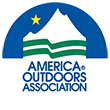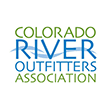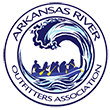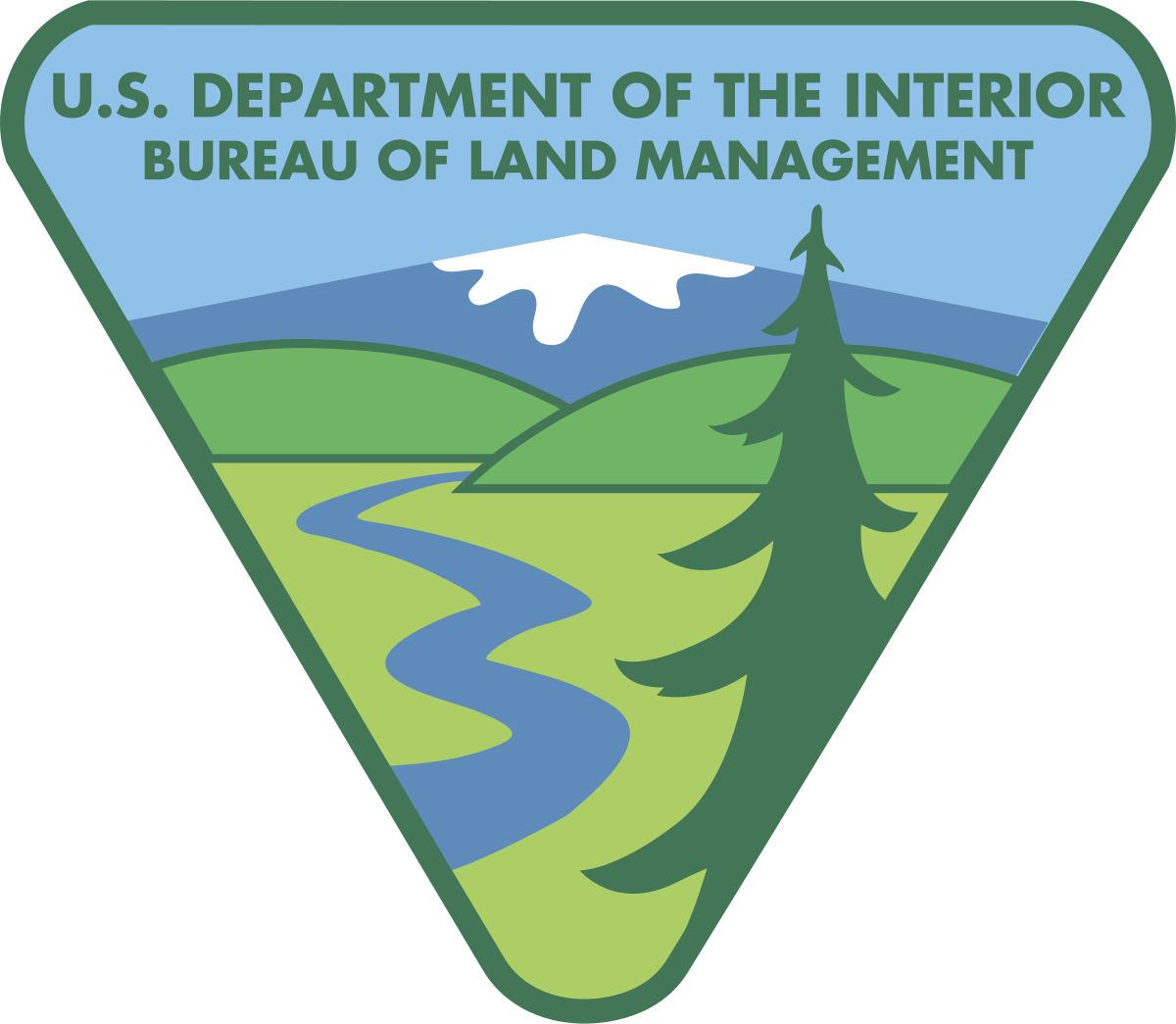What To Do When You Are Ejected From A White Water Raft
For some, it will be an unnerving feeling being ejected from the safety and warmth of your raft, and plunging into the cold and unforgiving rapids of a Colorado River. Though hopefully, you will remember the steps that need to be taken in order to make your rescue easier. They are not difficult, but are critical in ensuring your safety. Most likely you will be wearing a helmet and life vest as those are going to be your best friends on the river. You dont want to go anywhere without them. What follows here is a step by step guide on how to react when thrown from a raft, and into the torrents of a white water river. Step 1: Stay Calm – A bad situation can only be made worse by letting your emotions get the better of you. If you find yourself in the water, it is going to be disorienting, loud, cold, and generally a terrifying thing if you are not used it. The best way it can be described is chaos… pure, unadulterated chaos. So if you are to follow the remainder of these steps, you must start at, and remain calm through till the end. Step 2: Orientation – After being ejected from a raft while white water rafting, the first thing you are going to want to do is orient yourself. Begin by facing downstream, if you notice an approaching embankment you have a chance to get to, try and swim towards it. You will also want to take note of the location of the raft as they are going to try and pull you back in. They are going to do this either by holding out a paddle for you to grab, or throwing you a rope. So knowing which direction they will be coming from helps. Step 3: Nose to Toes – After you gather your wits and orient yourself, you are going to want to face downstream and keep your toes and nose above the water. The reason for this is that you dont want to go down stream head first, as that implies if you were to hit a rock, it would be with your head first. You want your nose above water so you can breath. You want to keep your toes up for various reasons. One is that there are jagged and sharp rocks unseen to the eye under the water, you do not want to drag or hit your legs upon them. The second is that these rocks and other debris can snag you or your clothes and pull you under water. The third is that if you notice you are about to collide with a rock, your feet can soften the collision. Step 4: Ride and Wait – Once you’ve gathered your wits, oriented yourself, and succeeded in nose to toes, all thats left is to wait for an opportunity to arrive where you can either be saved by the raft, or make a break for shore or an embankment. If the Raft is within distance, be sure to watch for any attempts on their parts to either throw you a rope or reach out with a paddle. If you notice an area suitable for landing, do not try to roll your body and swim downstream. Rather, roll your body so you face upstream, and swim to the side you wish to go. This will slow you down ensuring you dont overshoot the spot, but also keeps your head from pointing down river. It may also be worthwhile to carry a whistle on your vest. Rivers are often loud, and if you manage to get ashore you do not want the raft to pass by you without knowing you made it as they will continue down, leaving you behind. The same can used if you get stuck or lodged in between rocks or trees and need to let them know as they approach. If you would care to go Salt River Rafting or on a White Water Raft Trip, please contact Wilderness Aware Rafting to see what trips are available.
Family Friendly Adventure Expeditions
If you have children and you were to tell them that this year, you were all going to go on an Colorado adventure. They would probably laugh, snicker, and scoff at the idea. Assuming perhaps that it meant the usual trek through the hills, or a bike ride through some trails. But would you blame them if that were actually the case? Has our meaning of adventure lost its allure? Or have we simply overused the word to cover anything that is outside the norm of everyday life? Adventure once meant a daring and unusual experience that required enthusiasm from those participating. It took a bit of enterprise and planning, it also took some courage. Not that danger had to be inherent, but the possibility of danger does add to the excitement. Now for a family trip, you would want to lessen any possibilities of danger. But precautions can be made for any form of expedition, even to the extent that you can almost alleviate any potential for trouble to arise. Countless families go rock climbing, camping, trail riding, even hunting together. All of these have some form of danger involved in their activity. However, none of those could be considered an adventure if they have done them before, especially if it is in the same area that you have always been to. Remember that adventure must contain a few key components if it is to be adventurous. It first must be a daring and unusual experience. The daring aspect of it may be easy to cover as many activities are daring, but for it to be unusual means that you must not be familiar with it. This is hard as it leads to the second point which is that it must take a bit of planning and enterprise. This is where enthusiasm rises from, the idea of doing something you have not done before and preparing yourself to do that. This then leads into the last point which is that it must take courage. Courage doesn’t have to mean you must risk life and limb. But simply that you have the courage to try something you have yet to experience, to plan it out, and set your mind to completing it. You can’t go on an adventure if where you are going you have already ventured. Thats why its an addition to venturing… an adventure. So when a child doesn’t feel the weekend trail ride in the mountains is as fun as it once was. It’s probably less the fact that they’re getting older and more that there is no thrill in it any more. There is no other time in life where people are more adventurous, and can possibly be so, than when they are children. They epitomize the spirit of adventure, which undoubtedly is still in all of us. We just lose touch with it as we age and fall into the routine of everyday life. But I would assume that we all miss that care free adventurous spirit we once possessed, and would not want our children to lose theirs as well. To help avoid this, ensure that your next trip is an adventure in the purest form. Perhaps take a family friendly rafting trip to a river you have not been to, or go spelunking and explore a cave that you had not known of. If you want to keep the spirit of adventure alive in your children, you must help it to grow as anything else. Also, if you care to reawaken your own spirit, all you have to do is try. If you would care to go on a Colorado rafting vacation, or raft the Colorado River, visit www.inaraft.com to see what options are available. Rafting the Colorado river has never been made more simple.
7 Safety Tips for Whitewater Rafting
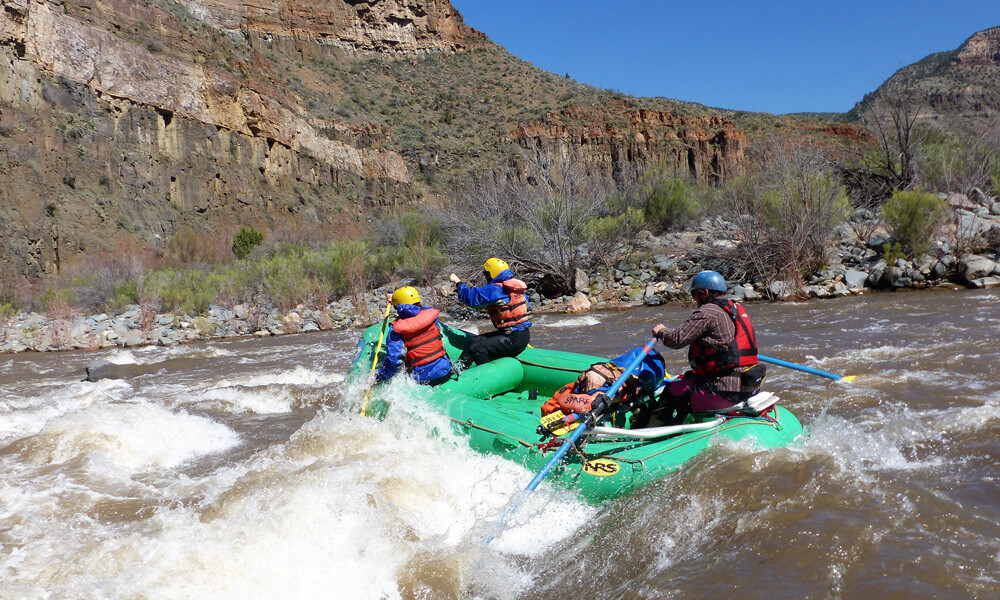
Before taking a whitewater rafting trip this summer, be sure you go through this safety check list. Many of the things seem obvious to an experienced rafter. Though to the inexperienced, if any of these things are forgotten you may well be uncomfortable in the least, and at worst, may be putting yourself into unnecessary danger. Life Vests and Helmets: As far as safety equipment, these two top the list. You want a helmet that fits securely when strapped and doesn’t shift around on your head. You want a life vest that is comfortable, but not to loose. Properly fitting equipment is not only necessary for safety, but if the life vest or helmet does not fit as it should, it may restrict movement which obstructs paddling. The Buddy System: You should never go rafting alone, regardless of how tame the river may seem to be. The buddy system is self explanatory, if you plan on taking a day trip,an extra pair of eyes and hands are always welcome. Especially when doing something even remotely close to dangerous. Notify Friends and Family: Sometimes even having a rafting buddy present isn’t enough. Be sure to tell your friends and family of the river and course you intend to explore. As well as the day you plan on returning and the courses of action you want them to take if you do not arrive on that date. This can easily save your life if done, most people who perish in the wild do so because they could not be found. Make sure you avoid this problem from the start. Control your Paddles: There are two problems that can occur with the paddles during a trip. One is that when you become tired, you may be inclined to let your paddles drag in the water. This is a problem because that drag can cause the raft to drift or turn to one side. This may not be a big problem in calm waters, but if rapids are present it becomes dangerous. If you feel you cannot paddle due to exhaustion, rest them on the side of the raft but keep them out of the water. Along those same lines, you dont want to knock people with your paddles as it could harm them or at worst knock them into the river. This may be difficult when going through rough rapids, but keeping it in mind is better than not being aware at all. Stay Hydrated: There is no greater or more silent danger than dehydration. It can cause great discomfort if left untreated, and eventually will lead to death. Various trips in Colorado and throughout the southwest can easily lead you to be dehydrated. The climate is dry, and if active outdoor, you will lose tremendous amounts of water. You also have to be careful not to over-hydrate, the body can only absorb a quarter of a liter every 20 minutes. If you drink more than this, you will feel similar symptoms to that of being dehydrated. Headaches, dizziness, and nausea. Proper Foot Wear: While rafting, proper foot wear may not be the first thing that comes to mind. But at some point you have to put the raft into the water as well as take it out of it. So they will help in this sense. But if you get bucked out after a rapid, you want to head down the river feet first. Shoes will help protect your feet in this instance. Also, walking in a river can be slippery and jagged, which shoes will help to protect against as well. Check Equipment: Be sure to check that your gear is in proper functioning condition. Also make sure that all loads are secured as you would not want them to break free. This could result in harm to rafters, or at least the loss of gear to the river. Be sure your helmet and life vest is also not damaged in a way that it might inhibit it from working properly. In all, rafting is both fun and exhilarating. But if you do not take the necessary precautions, you may expose yourself to unnecessary dangers. For more information on whitewater rafting, and for the adventurous type, multi-day rafting trips, please visit InARaft.com for more information.
Facebook 2-Day Giveaway Winners Are Ready to Raft!
Last summer Wilderness Aware Rafting ran a contest to giveaway a Free 2-Day Arkansas River rafting adventure to the group that posted the best story as to why they should win. Sara Kranz and her friends won the trip after posting a fantastic and touching story about friendship and adventure. Now the group is gearing up for their trip and wanted to catch up everyone on their plans. From: Sara Kranz, ie “the Instigator” Hermosa Beach, CA The countdown is on! July 6th and 7th, 2012, our group of “home grown friends” will be embarking on an adventure of a lifetime! Unfortunately, Andrea will not be with us in person due to an unexpected turn of life events (damn those life events :), however she will be near and dear to us in spirit.Watch for upcoming blogs, as we have a “surprise” for her to see… lol! The trickery does not end just because you are not there to defend yourself! As for who is taking Andrea’s place, we have Tracy McGoldrick flying in from Texas. Tracy is a dear friend of mine, and we go way back; we both lived in Wauwatosa, Wisconsin at the same time, and Tracy is married to one of my husbands’ best friends from college (did you get that? No worries, as this is only 1 of a million intertwining events that have occurred in our lives.) Tracy is an outdoor enthusiast, but has never been white-water rafting. She will fill you in more during her “blog post”. As for me, I cannot wait to hit the wild rapids with my closest friends in tow, laughing till it hurts (it usually hurts badly!) Sharing life stories, reminiscing about the past, discussing the present, and laughing about the future is what we do best! I am up for anything, quite honestly, so pictures beware, you never know what you may see! Hopefully Wilderness Aware can “handle” our group of crazy women, as we are more than ready to make memories that we will never forget! THANK YOU, Wilderness Aware, for making this happen! From: Kim Linz The trip is so close I can hardly believe it. It is pretty chilly today in Southern California, so it is hard to believe I will be rafting in the sun (hopefully) with my favorite girls in 6 short weeks. From our application you know I am a cancer survivor. What you may not know is that I still live with cancer and take chemo daily. Despite this I am an avid hiker, runner, and biker. I do not let my illness slow me down. After a scare this fall and surgery that had me believing I might not be able to make this trip, I am recovered and more ready than ever! I am an elementary school principal. I still have 4 weeks of school left before I leave for this exciting trip and work is keeping me crazy. I put the countdown for summer up in my office window today and have the countdown for this trip on my mirror at home. My students and their families know that I am leaving soon after summer starts for this trip and I am getting a lot of advice! I have never been white water rafting, but love the water. Everyone tells me this will be the trip of a life time! I am sad Andrea won’t be joining us, but am excited to have Tracy jump on board. I think we have a great group that will laugh the entire time. I hope you are ready for us because I can’t wait! See you in July! From: Tracy McGoldrick Cheers! As you may have read, I am the newest recruit for the July rafting ‘extravaganza’! Or shall we re-name it: Rafting-palooza? I say this because there will be not only wild waters but wild times over these few days together. A bit of background: As Sara noted, we met because our husbands were college roommates. The interesting part is that I have not met the other 2 gals- and this truly echo’s my current mantra and journey in life. At 42 years of age, I had never moved out of my zip code (except 3 years away at college). My husband and I had been aching for a change (weather related mostly) and we took a risk as a family (three young kids) and moved cross country to McKinney, Texas one year ago! I have never looked back. I find the new friendships, business connections (oh, did I note that I started my own business venture 6 months ago?), and everyday newness refreshing ~ just plain ole’ good-for-my-soul. So, with this new adventure put at my feet (thank you, Sara), I say namaste and bring it on! My mantra: I believe life is about enjoying and believing what you do…whether that be family or professional.
Historic Expeditions on the Colorado River
The Colorado River, Colorado’s largest river, has a history as long and dramatic as the course of the river itself. Which weaves its way through the southwestern portion of the United States and down into the northwestern side of Mexico. The river begins in the central area of the Rocky Mountains, and flows nearly 1500 miles, through 7 U.S and 2 mexican states. Once in Mexico, the river turns into a large delta which then empties into the Gulf of California. The Colorado River (Color Red) was originally named for the reddish tint of color found in the water, however, the numerous damms the have been erected over the years has caused the water to turn more into a clear greenish color. In the early 1500’s, Spanish explorers began to colonize the western portions of North America. One reason for this was to search for the fabled Seven Cities of Gold. It was believed that Native Americans had erected these cities somewhere in the southwestern desert. Francisco de Ulloa was the first explorer to reach the Colorado River in 1536, but it wasn’t until Francisco Vasquez de Coronado began his expedition to search for the Cities of Gold from 1540-1542, that the river was truly mapped and coursed. In order to raft the Colorado River, which was an extremely dangerous endeavor, supplies had to be gathered, boats had to be crafted, and men readied for the strenuous trip ahead. The bravery necessary to raft a known river is in itself impressive, but to raft an unknown river, with unknown dangers looming ahead, takes a certain kind of tenacity that is not often known today. It wasn’t until the mid 1800’s that large sections of the river had been unexplored. Though, a name that may be rather familiar to those who live in Colorado, is that of the one armed civil war veteran John Wesley Powell. Powell led an expedition from Wyoming down to Arizona, to what is now known as the Hoover Dam. Before Powell, large lengths of the river remained unexplored as the course was both remote and terribly dangerous. So not much was known about the Colorado River, nor its surroundings, or inhabitants. Though, Powell was determined to set off, and with nine other men, none of whom had any experience with white water rafting, they began their journey in May of 1869. After four months of coursing their way through a dangerous and rugged landscape, they finally arrived at the mouth of the Little Colorado River. This is where Powell wrote some of his most famous words about what he coined the Grand Canyon of the Colorado: “We are now ready to start on our way down the Great Unknown. Our boats, tied to a common stake, are chafing each other, as they are tossed by the fretful river. They ride high and buoyant, for their loads are lighter than we could desire. We have but a month’s rations remaining. The flour has been resifted through the mosquito net sieve; the spoiled bacon has been dried, and the worst of it boiled; the few pounds of dried apples have been spread in the sun, and reshrunken to their normal bulk; the sugar has all melted, and gone on its way down the river; but we have a large sack of coffee. The lighting of the boats has this advantage: they will ride the waves better, and we shall have little to carry when we make a portage. We are three quarters of a mile in the depths of the earth, and the great river shrinks into insignificance, as it dashes its angry waves against the walls and cliffs, that rise to the world above; they are but puny ripples, and we but pigmies, running up and down the sands, or lost among the boulders. We have an unknown distance yet to run; an unknown river yet to explore. What falls there are, we know not; what rocks beset the channel, we know not; what walls rise over the river, we know not; Ah, well! we may conjecture many things. The men talk as cheerfully as ever; jests are bandied about freely this morning; but to me the cheer is somber and the jests are ghastly.” —John Wesley Powell’s journal, August 1869 That same month, three of Powells men deserted, believing that they could not survive the remainder of the trip. Though, they were either killed by Native Americans or Mormon settlers after making it to the edge of the Grand Canyon. The remainder of the crew continued on and only two days later reached their goal which was St. Thomas. In 1871, Powell began a second expedition though this time he had the financial backing from the U.S government. Through the course of Powells second expedition, him and his men named various features and areas along the way. Names which still remain till this day. There is the Glen Canyon, the Dirty Devil River, Flaming Gorge and the Gates of Lodore. Oddly, the most well known is Lake Powell. Which is only odd because he was so well known for river rafting, not sailing lakes. It was once wondered, “where is the Colorado Rivers origins and what does it eventually lead to?” Well those questions have been answered numerous times by many people traveling the various branches off this great river. But if you would perhaps care to travel a section of it yourself, it would behoove you to check out our multi-day trips. You can experience for yourself what Powell and his men had both seen and feared seeing in the past.
Don’t Fret! There is Great Rafting Near Denver!
If you’ve ever considered rafting near Denver, you may have also considered that there are no good rivers to raft near Denver. Though with a little planing, and a small drive, there are a number of awesome rivers in which to wet your appetite with. Denver white water rafting itself may not be possible, but who would actually want to raft a river in Denver anyhow? Could you imagine how filthy the river would be? How many people would be watching you scream as you cascade over that huge wave? Do you really want a crowd hoping you will ejected from the raft? Well some people may answer yes to those questions, but most would prefer to leave the crowds in Denver. There are many white water rafting trips that can be made within Colorado, which can also be made on a variety of rivers. Lets discuss some of these rivers which will help to get the city dwellers out of Denver, and into the heart of Colorado where the rivers run wild! The Arkansas River can be found around and near to Buena Vista, Salida and Canon City. This is one of America’s most popular white water river destinations. This river has suitable routes for any class of river-rat, ranging from mild to intermediate all the way up to extra challenging. The best times to raft this river are from the start of May to early September. The Gunnison River is both an isolated river and one with awe-inspring beauty. It runs adjacent to the Black Canyon of the Gunnison National Park. The river flows near Delta, Grand Junction and Montrose, which those areas themselves are also sections of Colorado which are unforgettable. The best time of the season to raft this river is from the start of May to early September. The Upper Colorado River is one of the more pleasant rivers to raft on in Colorado. The river gently flows allowing for any level of rafter to enjoy and take in the surrounding beauty of the ranch meadows that run along the river, and the high cliffs that line it as well. There are also riverside hot springs that can be taken advantage of if one feels so inclined. The river runs near Steamboat Springs and Kremmling. The best part of the season to experience this river is during early May and the beginning of September. The North Platte River is one of the least rafted rivers in Colorado. If you are looking for a bit of seclusion and a true backcountry feel, than this is the river for you. There are a large number of animal that can be seen along this river, without a doubt you will see more animals than people. The river runs near Walden and Kremmling and the best time to try and raft this river is during mid May and late June. The Dolores River can only be done as a multi-day trip as it is located deep within Colorado’s southwestern desert. It runs near Durango, Cortez and Telluride. There are certain sections of rapids which range in difficulty from beginner to advanced. This river is a great option if you are truly looking to get away. The best part of the season to attempt to raft this river is in May. If you are interested in rafting Colorado rivers, than check out the various Colorado rafting trips available through Wilderness Aware Rafting. There are a number of options available depending on the length of the trip as well as te difficulty.
Lets all Pay a little Due Respect to Colorado Rivers
Colorado was named after the Colorado River, which early Spanish explorers named the Rio Colorado for the silt found in the river carried down from the runoff from the surrounding mountains. If you have never seen the Southwest of Colorado, you might not realize that the mountains are a striking red color which are vastly different from the Flatirons found near Boulder. When you think of Colorado, images of high planes and huge granite peaks may come to mind. But for many, a lack of thought goes into the various rivers and waterways, which throughout time, have shaped this beautiful state as they snake their way toward the Southwest. Rafting Colorado rivers is nothing new, rather, it has been done many times before and for various reasons. Explorers and natives used these water ways to transport goods, and to navigate through lands which were too difficult to navigate on foot. They’ve been used for a source of food as well as energy. Colorado Rivers have in the past, and continue to this day to allow this state, as well as others, to function. When we think of all the things to be appreciated in this state, sadly it is one of the last thoughts on our minds. Usually we conjure up images of high peaks, low valleys and the abundance of wildlife and plants. Perhaps however, it is time our rivers receive a little limelight for allowing all these other things to be. One simple way to achieve this is by simply taking part in the activities these rivers provide us. From swimming to fishing, to whitewater rafting, there are numerous activities that can be taken advantage of. Especially because there are a number of rivers from which to choose from. There are over 200 waterways in Colorado, to name only a few there are the Arkansas River, White River, Yampa River, Swan River, San Juan River, and the famous Rio Grande. Each river has it’s own unique history and story, with tales of gold mining, rafting, and general exploration. One great aspect of these rivers are the breathtaking scenery created by the years of carving these rivers have accomplished in the rock. There is the Royal Gorge, which has the Royal Gorge Bridge suspended above it. There are the sheer cliffs that the White River have carved out in the White River National Forest. Due to the endless effort of the water, there are also countless caves spread throughout the state which are accessible. Many of which are next or near to these rivers. Next time, any thought of what activities can be done in Colorado are given, consider paying a little due respect to our many rivers. They have created a vast playground in which we have the opportunity to enjoy, and we shouldn’t necessarily look up to the mountains for things to do. We just have to let our eye follow where the rivers flow, and there are bound to be places to play and go. If you want some advice on where you can enjoy the various rivers in Colorado, or care to plan out an exciting trip, please visit Wilderness Aware Rafting. They will have many options available from which to choose, but all take advantage of what this state has to offer.
Experience the allure, wonder and natural beauties of Colorado by rafting down the states most prominent rivers!
Summer has finally entered full swing in Colorado, and we at Wilderness Aware Rafting want to help share what we find to be the most beautiful and awe inspiring parts of this great state. Rafting in Colorado is one of the easiest ways to experience much of the flora and fauna that this state has to offer. Two of the better rivers that can be experienced in Colorado are the Arkansas River and the Royal Gorge River. Both are located in the south and southwest of Colorado. Rafting in Colorado provides unique encounters with its wildlife and allows to fully appreciate the states plant diversity. This is due to the fact that plants obviously thrive and are healthier when there is a constant water source available. Wildlife also flourishes when water is readily available. Upon an Arkansas River Rafting and Royal Gorge River trip you could expect to see the infamous Soapweed Yucca plant which is oddly well suited for sewing purposes. If you were to draw the needle out from the middle of one of its leaves, the needle will have long strands that are attached to it which make it quit suitable for sewing rips and tears in your clothing. There is Sagewort or Sagebrush which is commonly used to feed cattle as it contains very high levels of protein. Blue Grama Grass is important for holding together prairie soil due to its shallow dense root system. This helps to prevent the soil from blowing around as it did during the dustbowls of the 1930s. There is the Plain Prickly Pear Cactus which is known for making many a hikers day a bit uncomfortable. Also any number of wild flowers can be seen, such as Asters, Blazing Stars, Purple Clover, Coneflower, Fleabane, Wild Indigos and many more. Some of the wildlife that can be seen while rafting in Colorado are Coyotes, Badgers, Foxes, and even Black Footed Ferrets. Deer, Prairie Dogs, and Pronghorn. For anglers, there are Brown and Rainbow trout. For the bird enthusiast, there are Humming Birds, Herons, various types of Hawks, Falcons, Owls, Kestrels, Meadowlarks, Kingbirds, Vultures, and if you’re lucky you may even spot one of the few endangered condors which still grace our skies. Which there are only a few hundred left in the wild. The sheer number and diversity of wildlife in the area makes any trip upon these rivers memorable. If you have an appreciaiton for either flora or fauna, it is almost certain you will not be let down in your experience upon these rivers. Even Rock Hounds would feel traveling in these areas as an adventure. Aquamarine is often sought after in the region as well as various Geodes which can be found. If you are looking for something fun, thrilling, educational, and perhaps even meaningful to do with friends and family, then taking a River Rafting Trip through Wilderness Aware Rafting would be something that should be considered. It’s almost assured you wont be let down.
Last chance to take advantage of our Season Wrap-Up Discount!
If you haven’t had a chance yet to partake in one of our popular Salt River rafting trips, don’t despair! You still have to time to take advantage of the Arizona rafting season with our Season Wrap-Up Discount. We want to see you on the Salt River this spring, so Wilderness Aware is taking 10% off your Arizona rafting trip if you book before April 22. Read on for some more information on our popular Arizona rafting trips, and take advantage of our remaining availability for this great trip discount! If you have a big sense of adventure but you’re pressed for time, sign up for a $95 half-day rafting extravaganza winding through Mule Hoof Bend in the Upper Salt River Canyon. You’ll navigate Class III and IV rapids in the canyon, watch for wildlife sightings, and partake in the beautiful scenery and camaraderie—not a bad way to spend a morning. Make every hour in your half-day count with this whitewater adventure at a discounted price. If you have a little more time to spare, meet us an easy drive away from Phoenix or Tucson for a full-day whitewater adventure for just $129. We’ll explore the wonders of the Upper Salt River Canyon, including the stunning limestone cliffs that serve as a refuge for endangered Southern Bald Eagles. In between rafting Class III and IV rapids in Maytag Chute, Mother Rock, and Exhibition Rapid, your guides will prepare a fajita feast for you and your companions, made before your eyes using fresh and delicious ingredients. Check your schedule and take a day off for one of our Salt River rafting trips—and make memories that will last a lifetime. With flexible timeframes and affordable prices, our discounted Salt River rafting trips are the perfect way to get out on the water and welcome summer. Join us out on the river for a full or half day of Arizona whitewater rafting, and don’t forget to bring a friend and your sense of adventure! For more information on our Salt River rafting discount trips or our other Colorado rafting trips, visit www.www.inaraft.com.
Book your trip now and get a discount on your Colorado rafting adventure!
If you didn’t get a chance to use your Spring has Sprung discount on Arizona rafting, don’t worry—you’re just in time to join us for white water rafting Colorado! Right now, Wilderness Aware is getting ready to run Colorado rafting trips on 5 of Colorado’s most incredible rivers, and we want you to join us. Book your rafting trip any time before May 1st, and we’ll take 10% off your trip! Read on for more information on the Colorado white water rafting trips we offer with this discount. This spring, we’re running trips on five pristine Colorado rivers: The Arkansas, the Gunnison, the Upper Colorado, the North Platte, and the Dolores River. No matter what your experience or group size, we have the perfect trip for you. If you’re looking for a backcountry wilderness experience white water rafting in Colorado, check out our trips on the North Platte River, where you’ll likely see more wildlife than people. Or take a look at the Gunnison River—its stunning scenery and isolation from civilization make it a great option for those looking to get some time away from the daily grind. If it’s your first time whitewater rafting Colorado, or you have a young family in tow, you’ll want to consider the mild waters of the Upper Colorado. With scenery that includes ranch meadows, valleys, steep slopes and rugged cliffs, there’s something to catch the eye of every adventurer, young or old. Relax and enjoy the gently moving water, riverside hot springs, and freshly-prepared meals, courtesy of your guides. If you’re looking to get your adrenaline pumping, try rafting Colorado on the Arkansas River. With whitewater ranging from the mildly challenging Browns Canyon and Narrows trips to the heart-stopping and unpredictable Numbers and Royal Gorge rafting sections, you’re bound to find the perfect challenge for you. Wilderness Aware also runs trips ranging in length from a few hours to over a week, so no matter what your schedule looks like, you can get the right rafting trip in. To get your trip discount for spring rafting in Colorado, give us a call at 800.462.7238 or book here and enter promo code: SPRINGSPRUNG. For more information on our Colorado white water rafting trips, or to plan your land or water-based adventure, visit www.www.inaraft.com. Act now to save big on your spring rafting trip—remember, the offer only applies to trips booked before May 1. See you in the water!

